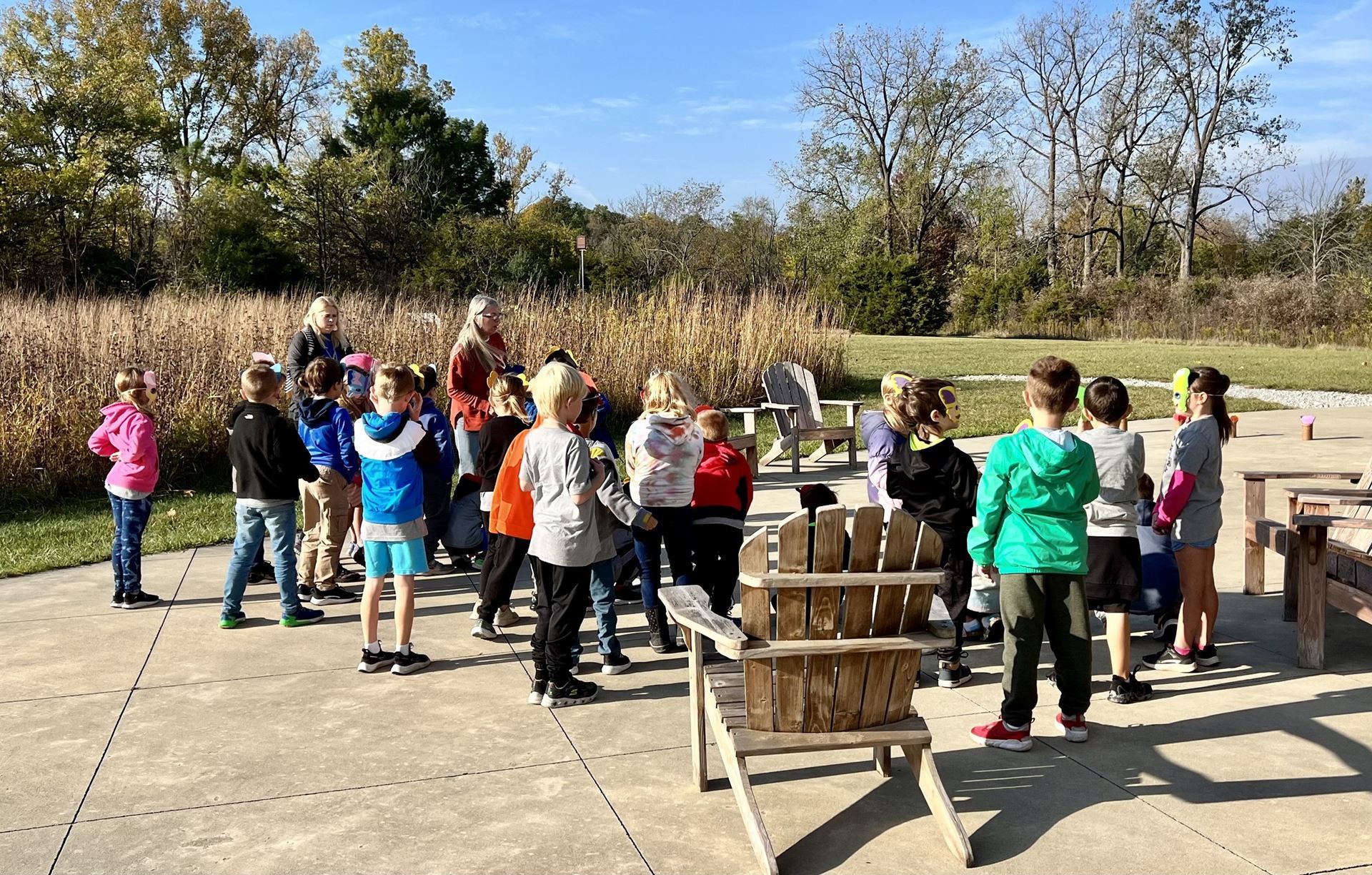 |
Lesson Plans
This website will serve as a storehouse for lesson plans that align with the Guidelines for an Environmentally Literate Citizenry. If you would like to share a resource for this website please email resourcecoordinator@eeai.org.
|
Kindergarten-6th Grades
- Strand 2: What's the Dirt on Soil: This program will: (1) demonstrate the difference between dirt and soil; (2) dig into the importance of soil by discussing what products humans use that originate from soil; (3) help students perform several experiments; and (4) lead students on a soil hike.
- Strand 2, 3, 4: Our Land Rocks: To inspire students to begin thinking of Earth not just as a planet with land and water, but as a place made up of rocks and minerals. To introduce students to the concept of land conservation using the Children of Indiana Nature Park as a tool.
- Strand 2, 3, 4: Indiana Rocks: To connect the students to an important Indiana natural resource. To help students understand why the study of geology is an important step in understanding land conservation. To introduce students to the concept of land conservation using the Children of Indiana Nature Park as a tool.
- Strand 2, 3, 4: I"m Diggin' It: For students to appreciate the complexity of soil, understand how long it takes soil to form, and recognize the importance of soil conservation using the Children of Indiana Nature Park as a tool.
- Strand 2, 3, 4: Habitat's Happen: To encourage students to differentiate between living and non-living things. To connect livingorganisms to their basic needs found in their specific habitat. To introduce students to the concept of land conservation using the Children of Indiana Nature Park as a tool.
-
Strand 2, 3, 4: Habitat Sweet Habitat: For students to understand habitats, learn the difference between living and non-living things, and recognize the importance of protecting Indiana’s habitats using the Children of Indiana Nature Park as a tool.
- IDNR curriculum for exploring Hoosier history through the lens of Indiana State Parks' development: https://www.in.gov/dnr/state-parks/cultural-resources-and-history/hoosier-history-and-indiana-state-parks/
7th-8th Grades
- Strand 1: Paper Airplane Lesson Use to develop inquiry and observation skills by making and flying planes outside.
- Strand 2: Oh Deer! Knowledge of Environmental Processes and Systems.
9th-12th Grades
- Strand 1: Monitoring Oriental Bittersweet Students will use percent cover techniques to measure and monitor invasive Oriental bittersweet. This could be adapted for other invasive species as well.
Various
Aquatic WILD (Supplemental 10-minute activities)
- Visual Arts - Creating 2.3 Kindergarten: Create art that represents natural and constructed environments - Students brainstorm water words, make word trees with those words, and write poetic statements about water. Aqua Words_Aquatic WILD_adapted supplemet.pdf
- (NGSS) 3-LS4-3: Construct an argument with evidence that in a particular habitat some organisms can survive well, some survive less well, and some cannot survive at all. - Students will discover the diversity of life that occurs when two habitats conjoin by analyzing aquatic populations in, around, and by a local waterbody. Edge of Home’ for Bloomington Wildlife_Aquatic WILD_adapted supplement.pdf
- 3-Life Sciences 4-4. Make a claim about the merit of a solution to a problem caused when the environment changes and the types of plants and animals that live there may change 3 - Introduce students to the ideas of riparian zones and use these as a way to think about environmental changes and solutions to environmental issues. Give students the ability to use their senses to develop ideas of a riparian zone. In the (Riparian) Zone_Aquatic WILD_adapted supplement.pdf
- (K-LS1-1) Next Generation Science Standards Kindergarten-Life Science 1-1: Use observations to describe patterns of what plants and animals (including humans) need to survive - Students will conduct a field investigation at an outdoor study site to discover wildlife, signs of wildlife, and the location of water sources which wildlife may use on the site. Water Safari_Aquatic WILD_adapted supplement.pdf
